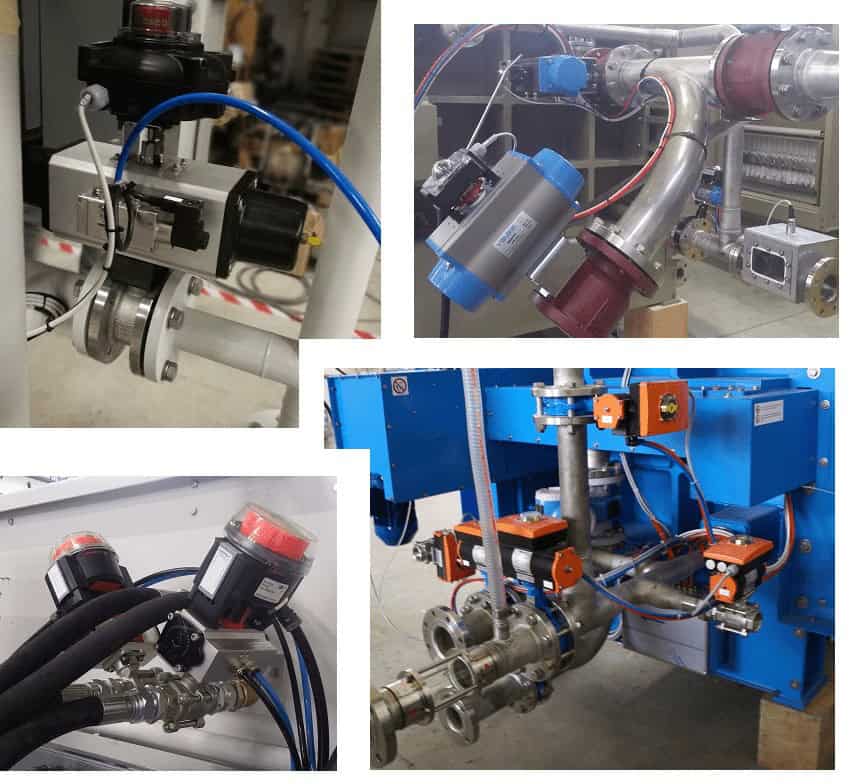El tipo de válvulas a instalar en las tuberías del filtro prensa puede depender de muchos factores.
Para ello existen diferentes tipos y diferentes materiales, dependiendo principalmente del lodo o fluido a tratar y del grado de automatización de la máquina.
Si el lodo, por ejemplo, no es especialmente crítico, normalmente se instalan válvulas de mariposa.
Si el lodo es especialmente pesado y tiene tendencia a atascarse, se recomiendan válvulas de bola, ya que permiten el paso completo.
Si, por el contrario, el lodo es abrasivo o tiene un alto porcentaje de sólidos en la entrada, puede ser conveniente utilizar válvulas de manguito.
The typology of valves to be installed in the filter press piping can depend on many factors.
For this reason there are different types and different materials, mainly according to the sludge or fluid to be treated and according to the degree of automatism of the machine.
If the sludge, for example, does not present particular criticalities, butterfly valves are normally installed.
If the sludge to process is particularly heavy with a tendency to obstruct, the use of ball valves is recommended as they allow total passage.
If, on the other hand, the sludge is fluid is abrasive, or has a high percentage of solids at the inlet, it may be advisable to use pinch valves.

A continuación, es necesario comprobar la compatibilidad química de la válvula que se va a montar con el fluido que se va a tratar, teniendo en cuenta el ph y el ataque químico, que puede ser más o menos grave.
Normalmente, estas válvulas se controlan mediante un actuador neumático (que puede ser de simple o doble efecto).
Dependiendo de la presión disponible en la línea, podemos montar actuadores estándar o actuadores sobredimensionados (que también pueden funcionar a presiones inferiores a las canónicas de 6-7 bar).
Encima de estos actuadores suele haber cajas de conmutación para señalar el estado de la válvula, de modo que sea posible evaluar visualmente de inmediato si la válvula está abierta o cerrada para realizar un diagnóstico de funcionamiento correcto.
It is then necessary to check the chemical compatibility of the valve to be mounted with the fluid to be treated, taking into consideration the pH and the chemical attack which can be more or less severe.
Normally these valves are controlled by a pneumatic actuator (which can be single or double acting).
Depending on the pressure available in the line, we can mount standard actuators or oversized actuators (which are able to operate even with pressures lower than the usual 6-7 bar line).
Above these actuators there are installed Switchboxes for signaling the status of the valve, so that it is possible to visually control whether the valve is open or closed for correct functioning diagnostics.